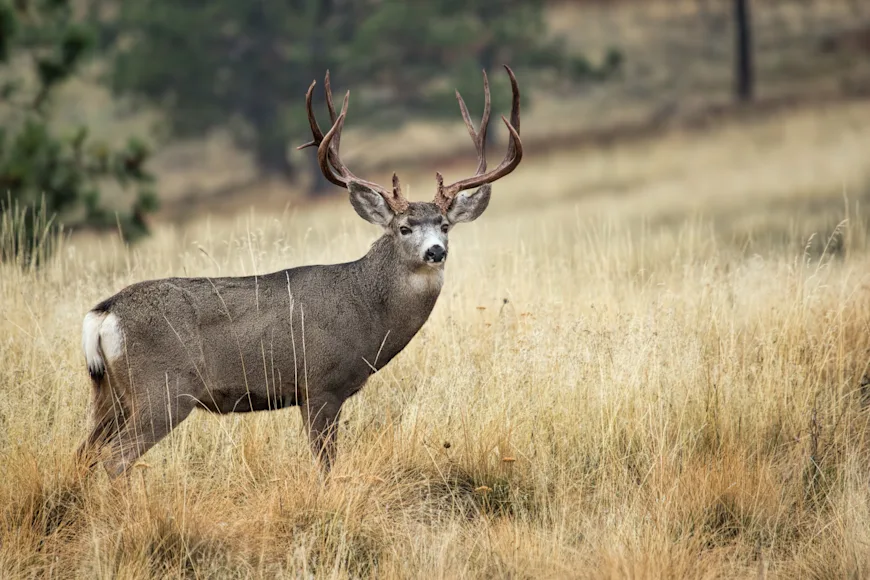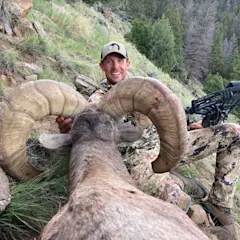We may earn revenue from the products available on this page and participate in affiliate programs. Learn more ›
If you’ve never been mule deer hunting on the prairie or in the mountains, then you should start making a plan to do it right now. Why? You know those dreams in your head of wide, forking antlers reaching into a giant sky and big gray bodies bouncing across the grasslands? Well, you really ought to see those things in person—and why not this fall? If you have been mule deer hunting before, then you probably have every reason to go again, and it’s not too early to start brushing up on your skills and knowledge ahead of the season.
I grew up in the West and have been hunting mule deer for 25 years. To me, the best thing about chasing muleys isn’t their impressive headgear or large bodies. What I’ve come to appreciate most is getting out into the vast and imposing country that mule deer call home—the sweeping prairies and sage flats, the alpine basins and cedar canyons and mountain peaks. And when those big antlers and gray bodies suddenly materialize in these places, it’s your move.
To me, mule deer hunts are more fun than most because they usually require action. Sometimes you sit and hope, but more often, you take the action to the deer. So, let’s get started. Below are the five most effective mule deer hunting tactics and how to use them to get your buck.

Mule Deer Hunting Tactic #1: Spot-and-Stalk
Spot-and-stalk hunting is the most popular, most effective, and generally most fun way to hunt mule deer. The great thing about this hunting style is that it is that it can work well no matter what implement you’ve got in your hands—bow, crossbow, muzzleloader, and centerfire rifle. Likewise, it doesn’t matter if you’re slinking across the sunlight plains or weaving through a patch of pines at timberline; spot-and-stalk hunting can be effective no matter the landscape or time of year.
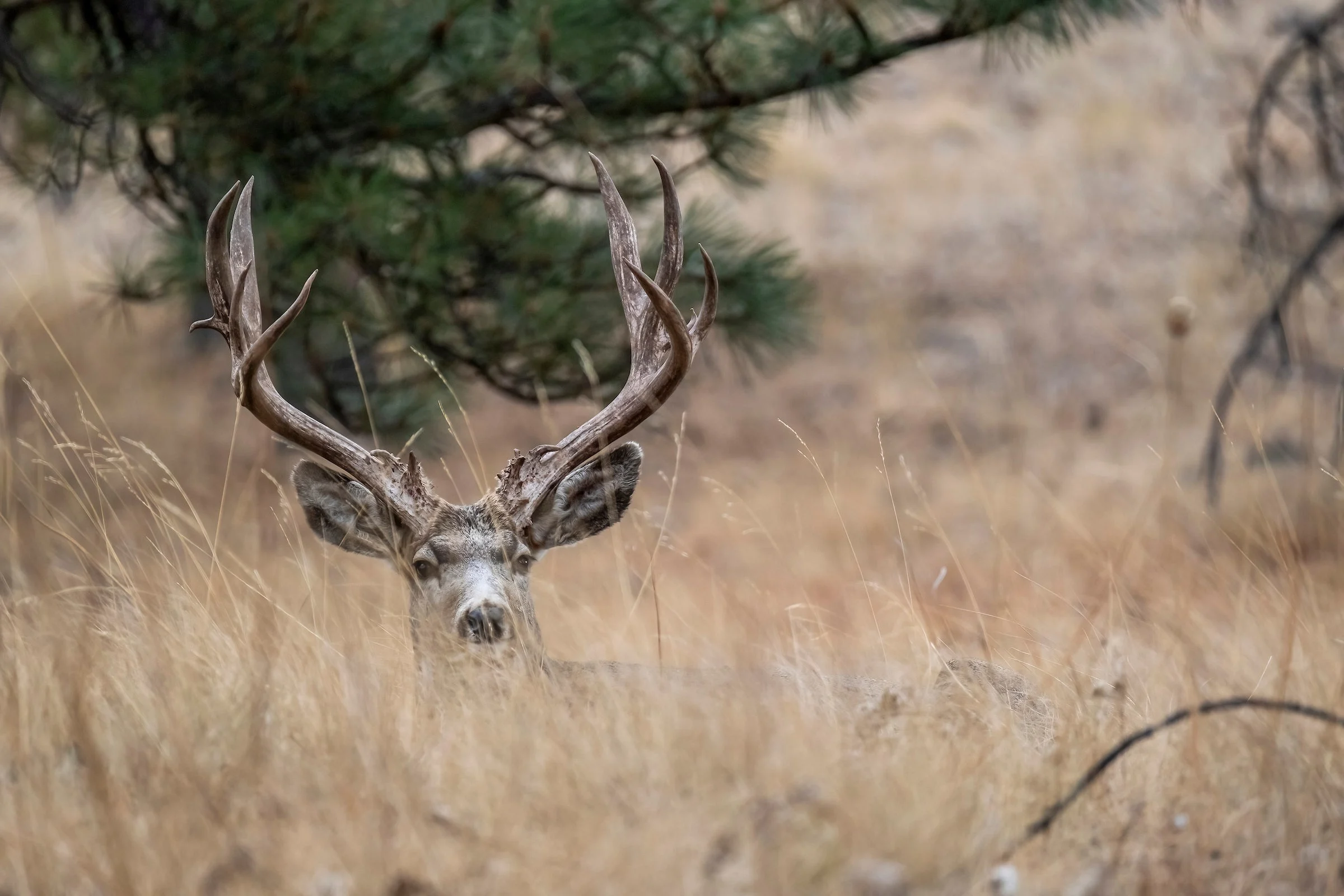
Mountain Muleys
In the early season, from August through late September, most mountain bucks make their homes in alpine basins above the treeline. Though it will take some serious effort to access off-the-beaten-path alpine basins and steep, grassy slopes, the reward is big muley bucks that don’t mind standing in the wide open during the mornings and evenings when you’re trying to spot them.
Before any early-season mountain hunt, study your hunting area on a quality digital mapping app. Hunt Stand is my go-to because of its updated monthly aerial images. You’re looking for five to seven glassing points that allow you to see vast amounts of the country above the treeline. Then, you rank those spots from best to worst. For instance, when I find a rocky knob that allows me to view two different alpine basins and three different mountain slopes, that location is pinned and will be a number one ranked glassing location. When I discover a glassing location that only allows me to view one lesser-sized basin, I mark it and plug in a note that it’s not a top locale but is a spot to move to if other areas don’t produce. Marking multiple glassing locations before your arrival gives you options.
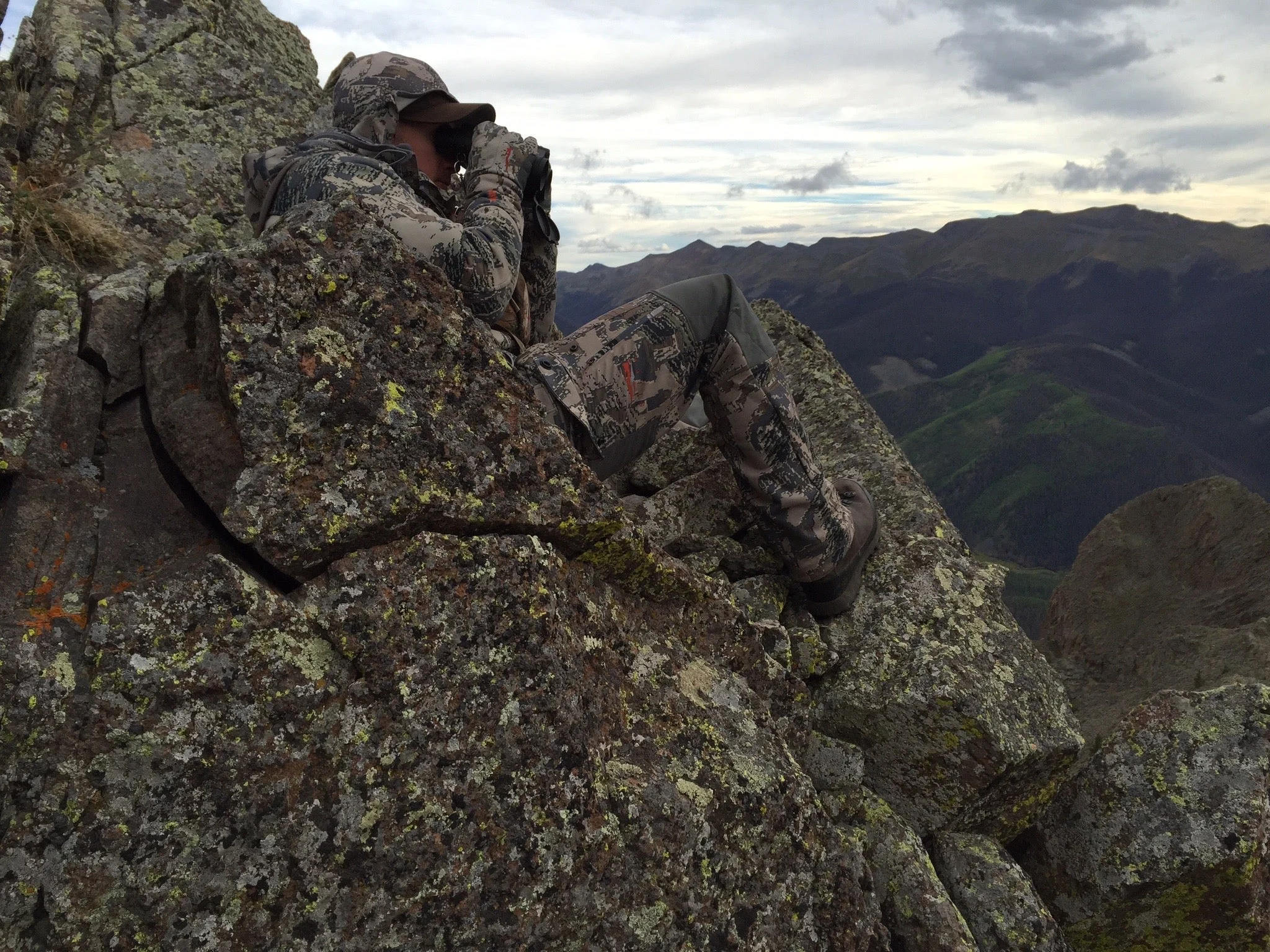
When you find a buck, or as is typically the case during this time of year, a bachelor group of bucks, watch them bed down, wait for the morning to warm up enough to start carrying thermals uphill, and then make your play. When hunting with a rifle or scoped muzzleloader (check your state regulations), I will get a little more aggressive when deer are on their feet, but when bowhunting, I wait for the deer to bed in a spot that’s good for me and bad for them. Regardless of the weapon, I usually rely on my glass to watch deer beds, and then I mark their position on my digital map and plan my approach from above.
Stalking the Flats and Foothills
When stalking lower-elevation mule deer on sage flats, CRP fields, and cedar-dotted hillsides, the game changes. Typically, hunts for deer in these locales happen in October, November, and December. Good glass will once again be your best friend, but more often than not, you’ll be using a truck or UTV and not your legs to jump from location to location. Use the vehicle to travel between likely mule deer haunts, and then let your glass do the walking.
Beginning in mid-October, scrappier bucks will start harassing does, and the gaggers, though they usually won’t be with a herd yet, are close by. Find the does during October, November, and December, and you’ll find a quality buck to stalk. You can get more aggressive when stalking plains deer, especially as the rut cranks up because deer don’t stay in their beds as long. Use the landscape—a dry creek, long, snaking coulee, tall sagebrush—to slip ahead of moving deer and put yourself where those deer want to be. Often, there will be enough cover to slip close enough to moving deer to get your shot.
Mule Deer Hunting Tactic #2 Still-Hunting
Still-hunting mule deer is nearly a lost art, and though it appeals to rifle and muzzleloader hunters more than bowhunters, it still works and is a fun challenge. My favorite still-hunting happens on mountain ridges in October and early November (before the rut) in areas of thick timber. I wait until mountain thermals start moving upward, and then I move very slowly along ridge lines, using my optics to glass into the trees below.
This hunting method is for super patient people who have no problem moving only 150 yards or so in an hour. You take a few steps, glass, take a few steps, and glass. I killed my first mule deer buck this way, and all I spotted at first was the tip of what I assumed to be a broken stick inching above a mountain deadfall. A glance through my binocular, though, showed that the stick was an antler, and after waiting for three hours for the buck to stand, I put a 160-grain bullet through his shoulder.
When still hunting the low country, I prefer to locate likely feeding areas, mark those areas on my map, and then work canyon edges or hillsides between feeding and potential bedding areas. Regardless of where you still hunt mule deer, always keep cover and terrain in mind to find the deer. Ask yourself: Is there north-facing timber where deer can escape the heat? Is there a depression or coulee where they can escape the wind? If those places offer cover for you to move through, then they can be top spots to try still-hunting.
Mule Deer Hunting Tactic #3: Driving
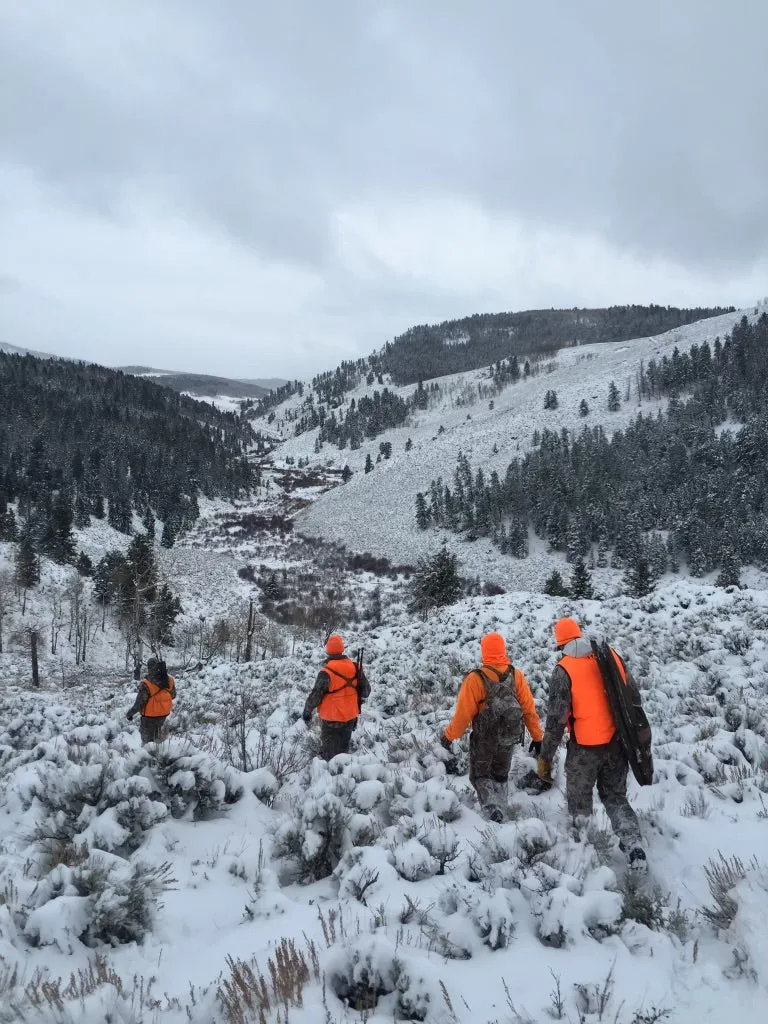
If you’re toting a rifle and you’re hunting with a group, a deer drive can pay off in spades if it is well-planned and executed. The idea is to locate an area where you believe or know mule deer to be holding. Next, look at the topography on the downwind side of the area and predict where a spooked mule deer would likely travel if bumped, and put your posters (shooters) there.
For safety, it’s critical that the drivers know the exact position of the shooters (use a digital mapping app) and allow the shooters time to get in place (use radios if legal). Then drivers move to the upwind side of the cover—whether it's a cottonwood creek bottom, narrow canyon, or timbered mountainside patch—and start moving, trying to push deer toward the posters.
Drivers don’t need to yell or run through the woods. Often, your stink will be enough to move the deer. The idea is to get a fleeing buck or two to move slowly past a poster (not screaming past them), presenting a high-odd shot.
Mule Deer Hunting Tactic #4: Calling and Decoying
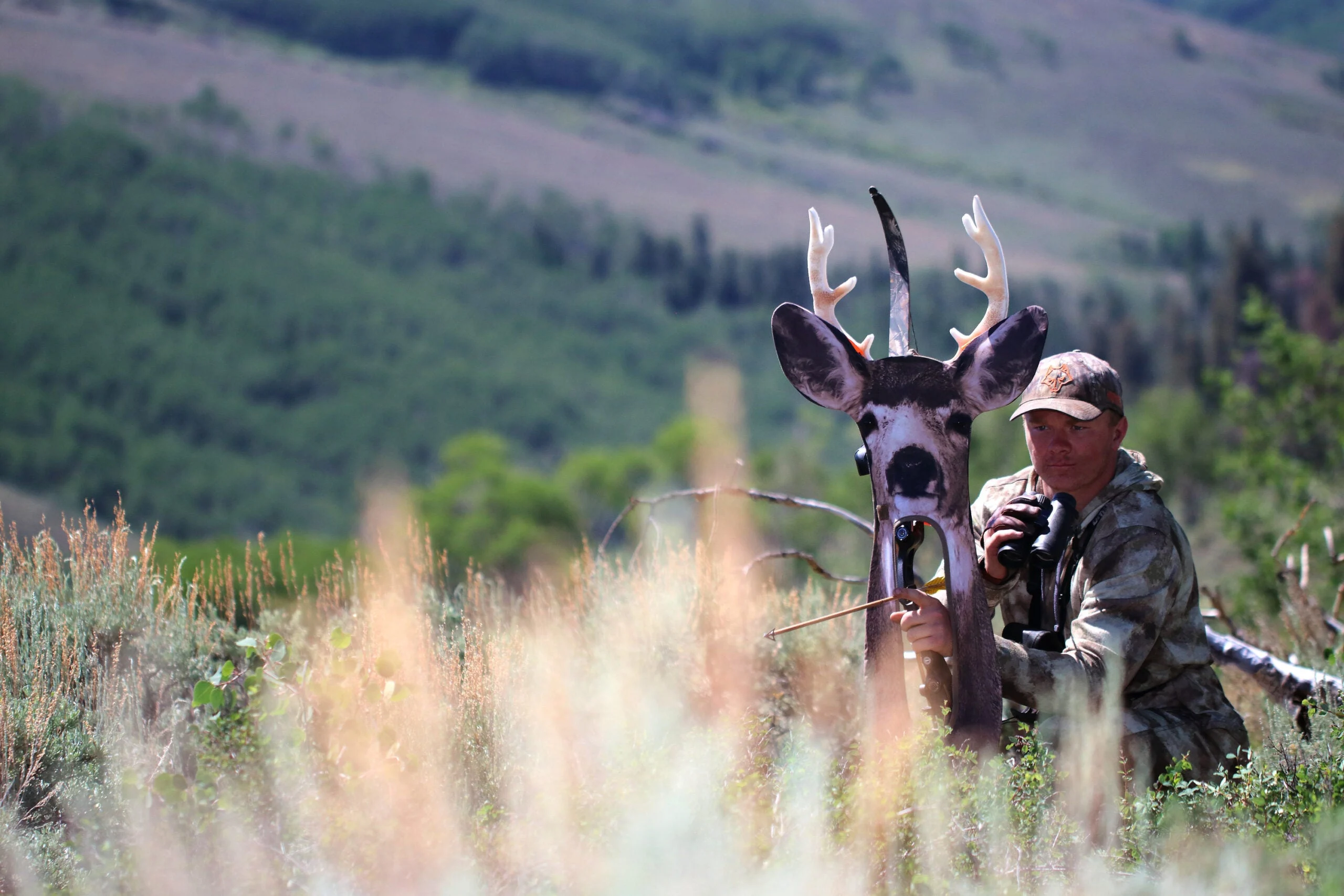
You can call mule deer in close, and I’ve done it multiple times successfully. My favorite time to call mule deer is during the rut, which in most western locations kicks off around November 10 and runs through the first week of December.
I don’t blind call to mule deer, like I may for whitetails, and I use my optics to find rutting bucks. Whitetail bucks chase single does in thick cover, but rutting muleys will gather a harem of girls and push them to open areas. Long sage flats with a creek running through them, CRP fields, sage and cedar hillsides, and cut crop fields are some of my favorite places to find rutting mule deer.
Once I locate a buck I want to go after, I use the terrain to slip in close and hammer the horns together, and I only stop once the buck completely ignores me and moves off or starts coming. I’m not big on grunts or bleats. What I am big on is a bow-mounted decoy. I only use one during archery seasons when there is no rifle deer season, for safety’s sake, but the fake can really help finish a buck that I’ve rattled to. My go-to is Ultimate Predator Gear’s Mule Deer Stalker Decoy. I toss a pair of Stalker Antlers on the decoy and give the buck I’m calling to some visual stimulation. When it works, it makes for a hunt you won’t forget.
Mule Deer Hunting Tactic #5: Ambush Hunting

I saved this one for last, like I do my least favorite glassing area. Why? Because, to me, it’s the least amount of fun. I don’t love waiting in one spot. But taking a stand or sitting in a blind can be very effective. Mule deer are tough to pattern, but when hunting the West, especially in lower country with more open terrain, I have had incredible success hunting them from a tree stand with archery gear.
The key is to find a cottonwood creek bottom that funnels deer movement between food and bed, much like you would if you were whitetail hunting. Or—and I’ve had excellent success with this—you can find a lone, isolated tree in the middle of a sage flat and hang a stand. Mule deer in open country tend to funnel toward solitary trees or a stand of trees, seemingly in the middle of nowhere. If you plan to ambush deer with a rifle, there is little to it. Move to a location where the wind is in your favor, get the sun at your back, and sit and wait for a buck to wander by. I don’t mind ambush hunting with a rifle, but to get excited about it, I need to be on an elevated hill or plateau where I can see a lot of country and have a chance at spotting a really good buck. On the other hand, if you’re new to mule deer hunting and aren’t so choosy, this is a great way to put a tag on your first mule deer.

